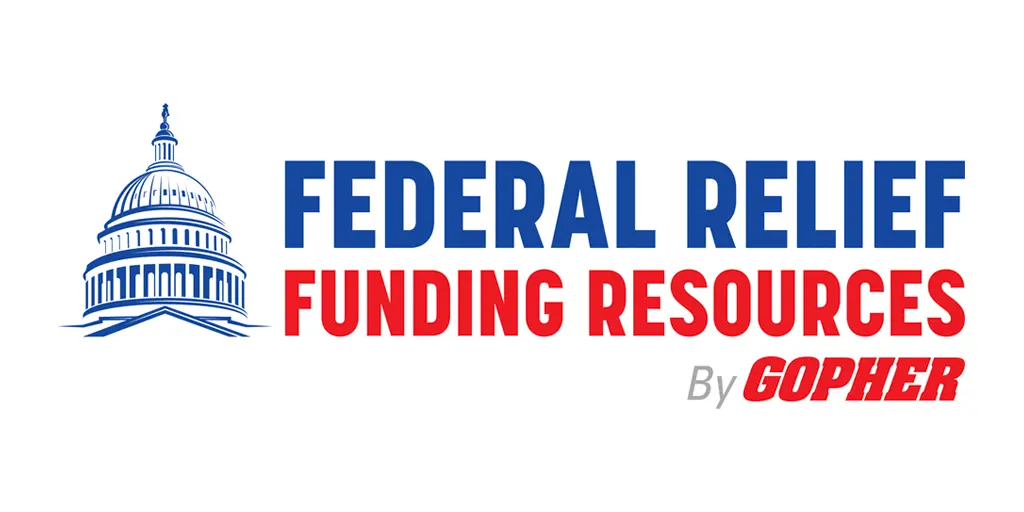Understanding Federal Relief Funding and
Why it Matters for Physical Education
It’s easy to get overwhelmed with an excess of information about federal funding especially as it pertains to the past year. When we are bombarded with government vernacular in an environment that’s “unprecedented,” it’s easy to get lost in the details.
Federal funding is available for Physical Education, but you need to advocate to your PE leader and district representative for it. Over the past year, three stimulus bills have been passed by the US federal government that includes nearly $200 billion for elementary and secondary schools. In comparison, on an average year districts typically receive around $55 billion from the federal government (8% of the total education budget).
The article below simplifies the most recent federal funding opportunities. Our intention is to give you a clearer picture of what is available in your state, how money is allocated to the districts, and ultimately how your program and students can benefit from it.
CARES, or the Coronavirus Aid Relief and Economic Security Act, is a stimulus bill passed on March 27, 2020. This bill included $2.2 trillion in relief for many aspects of the economy affected by COVID-19. Under education relief, the states (State Education Agencies) received $30.75 billion in emergency funding. They presented this funding under two main funding sources for K-12, ESSER and GEER.
ESSER, or the Elementary and Secondary School Emergency Relief Fund, provides $13.5 billion to LEAs or local education agencies (districts). To receive this funding, LEAs must apply to their state education agency. Essentially, your district applies for funding at the state level. States must offer 90% of the funds to the districts while retaining 10% to address their own emergency needs. The states must award the district with funding within one year of receiving the funds. This deadline is quickly approaching for many states (between April and June 2021).
Funding is allocated to districts based on Title I, Part A funding from the Every Student Succeeds Act of 2015. Based on this knowledge, Title I schools receive more funds than Non-Title 1 schools.
ESSER funds need to be tracked and spent before September 30, 2022.

CRRSA, or the Coronavirus Response and Relief Supplemental Appropriations Act is a secondary stimulus bill passed on December 27, 2020. Similar to CARES, this bill provides $81.8 billion to the nation. The CRRSA takes advantage of the previously created funding sources (ESSER & GEER) differentiating them from the first round through a simple tactic – ESSER II & GREER II.
ESSER II includes an additional $54.3 billion to be given again to LEAs (districts). States must offer 90% of the funds to the districts while retaining 10% to address their own emergency needs. Title 1 determining allocations applies here. SEAs have until January 2022 to give LEA’s these funds. Dependent on state, typically LEAs are required to apply for ESSER II funds. To see how much ESSER II funding was allocated to your state/district, visit our funding finder. Important to note, ESSER II funds should be reported separately from ESSER funds.
These funds need to be spent before September 30, 2023.
APRA, or the American Rescue Plan Act is a third stimulus passed on March 11, 2021. In an increase from CARES and CRRSA, this bill will provide $1.9 trillion to the nation. Similarly, The APRA takes advantage of the previously created funding sources (ESSER & GEER) differentiating them from the through the same means – ESSER III & GREER III.
ESSER III includes an additional $130 billion to be given again to LEAs. The same 90% – 10%, and Title 1 determining allocations applies here. One nuance is an LEA given ESSER III funds must develop a return-to-school plan and solicit comments on the plan within 30 days of receipt of the funds.
ESSER III funds can be used for everything under ESSER and ESSER II with the addition of:
- implementing public health protocols aligned with CDC and prevention guidance on reopening.
- reserving 5% of funds for “evidence-based activities” to address learning loss, 1% of funds to implement a summer enrichment program, 1% of funds to implement evidence-based after school programs, 0.5% of funds for administrative costs.
These funds need to be spent before September 30, 2023.
Funds can be used on a broad range of activities, which include but are not limited to:
-
- PPE
- Addressing learning loss
- Preparing schools for reopening
- Supplemental learning
- Addressing needs of at-risk or low-income students
- Providing mental healthcare services
- Providing necessary resources
- Planning for long-term closure
- Purchasing educational equipment
- Training and professional development on PPE
- Procedure development
- Testing, repairing, and upgrading buildings to improve air quality
© 2021 Gopher Sport. All Rights Reserved.


JOIN OUR NEWSLETTER
Sign up to receive the latest physical education resources, activities, and more from educational professionals like you straight to your inbox!







